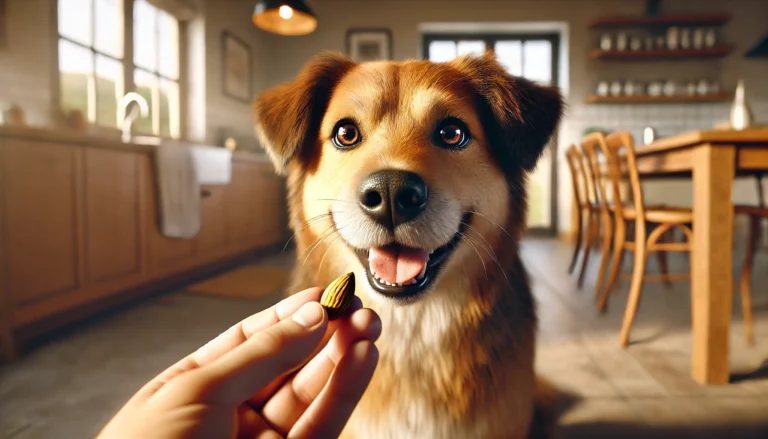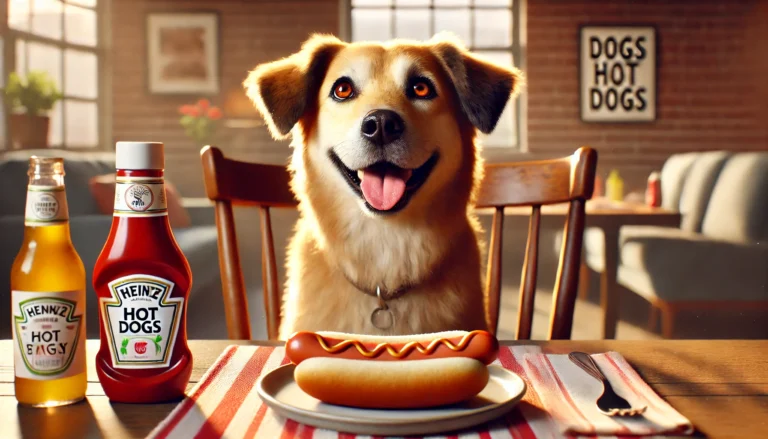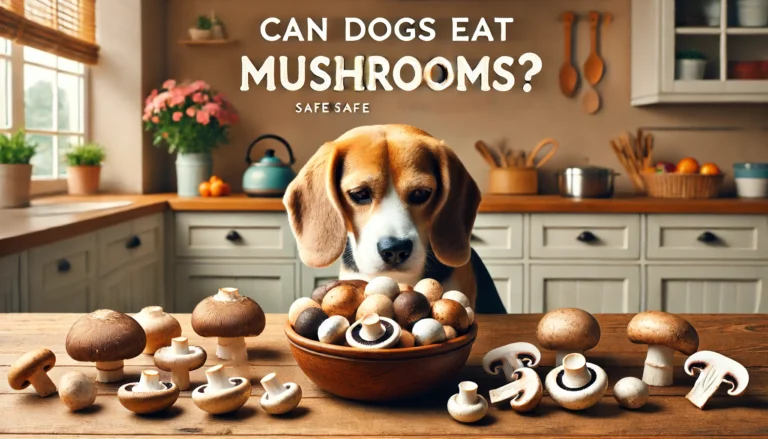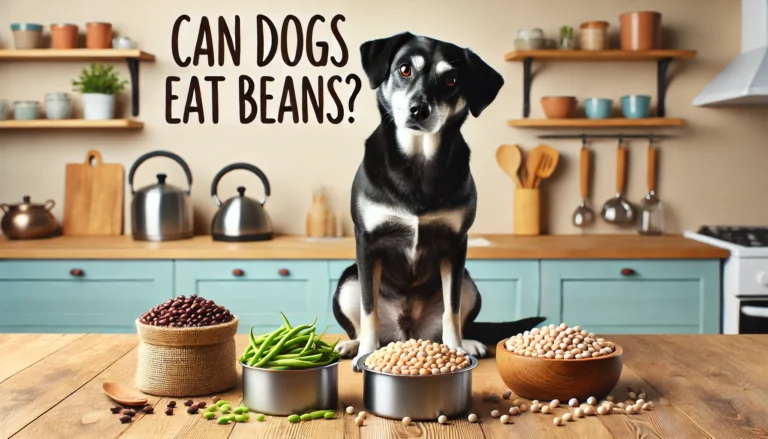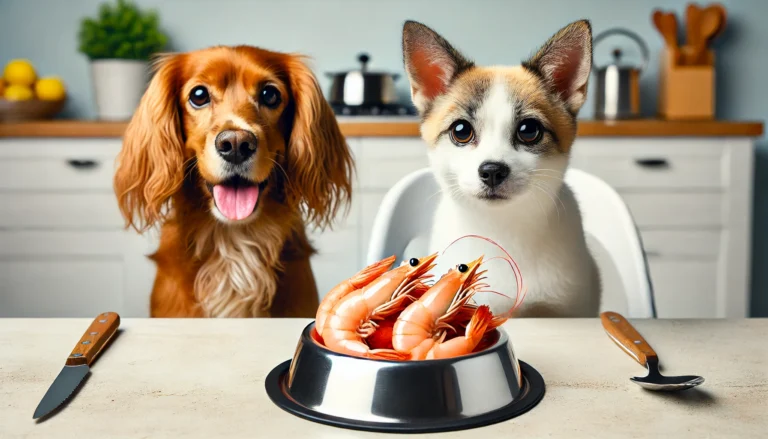Can Dogs Eat Green Beans?
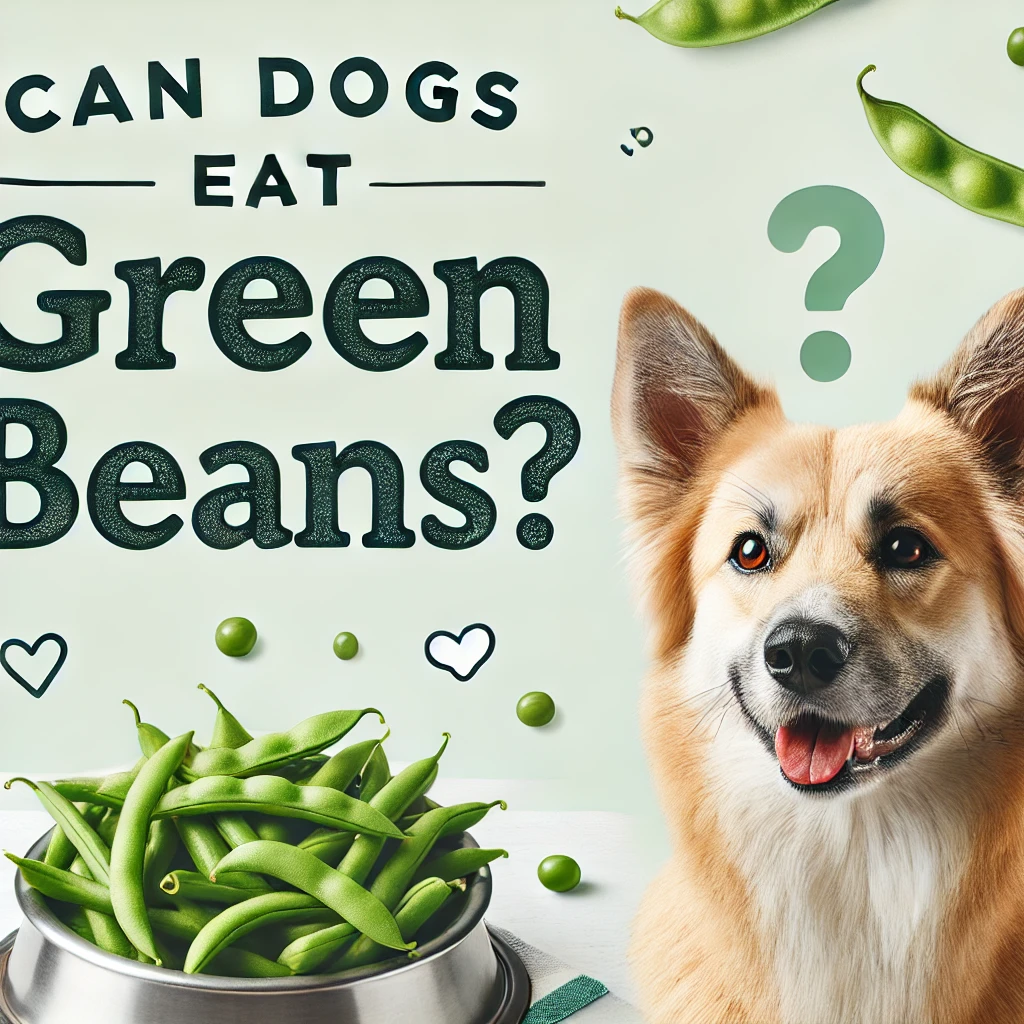
The Complete Guide for Dog Owners
Can Dogs Eat Green Beans? Green beans are a popular vegetable enjoyed by people worldwide, packed with fiber, vitamins, and minerals. But when it comes to our dogs, it’s important to know whether green beans are safe and beneficial for them. In this detailed guide, we’ll answer key questions about feeding green beans to dogs, explore the potential benefits and risks, and offer best practices for safely introducing this nutritious vegetable into your dog’s diet.
1. Can Dogs Eat Green Beans?
Can Dogs Eat Green Beans? Yes, dogs can eat green beans! Green beans are generally safe for dogs to consume and can be a healthy, low-calorie treat. Known also as string beans or snap beans, green beans contain beneficial nutrients such as fiber, vitamins A, C, and K, and minerals like iron and calcium. These nutrients can support your dog’s immune system, digestive health, and bone strength. When feeding green beans, it’s best to keep them plain, without added salt, spices, or fats, as these ingredients may harm your pet.
Can Dogs Eat Green Beans? Whether served raw, steamed, or cooked, green beans can make a tasty treat that provides added nutrition. However, moderation is essential, as too many green beans can lead to digestive issues such as gas or diarrhea. Moreover, green beans should never replace a complete and balanced diet, as dogs require proteins, fats, and a range of nutrients not provided by vegetables alone. Ensuring you stick to small portions and observing your dog’s reaction to this new food can help you integrate green beans safely.
do you know
So, as you already know, the question is ‘Can dogs have honey?‘ Yes, dogs can have honey, but only in moderation.
2. Benefits of Green Beans for Dogs
Can Dogs Eat Green Beans? Green beans offer several health benefits for dogs. Let’s explore some key reasons why these vegetables can be a positive addition to your dog’s diet.
Nutritional Benefits
Green beans are high in vitamins and minerals that support overall health. Vitamin A promotes eye health, vitamin C strengthens the immune system, and vitamin K supports blood clotting and bone health. Additionally, green beans contain essential minerals like calcium, iron, and magnesium, which contribute to muscle function and bone strength.
Weight Management
Green beans are low in calories, making them an ideal snack for overweight dogs or those needing a low-calorie filler in their meals. The “green bean diet” is sometimes recommended for weight loss, where a portion of a dog’s food is replaced with green beans to help them feel full while reducing calorie intake.
Improved Digestion
Fiber in green beans aids in digestion and helps regulate bowel movements. For dogs prone to constipation, adding a small amount of green beans may help improve digestive health. However, feeding too much fiber too quickly can lead to digestive upset, so introduce green beans gradually.
Skin and Coat Health
Antioxidants and vitamins in green beans can contribute to healthier skin and a shinier coat. These nutrients can help reduce oxidative stress and support overall cellular health, benefiting dogs with skin issues or a dull coat.
3. Are Green Beans Safe for Dogs?
Can Dogs Eat Green Beans? Green beans are generally safe for dogs when fed in moderation. However, there are some considerations and precautions to keep in mind to ensure that your dog can enjoy green beans without any negative side effects.
Avoid Seasoned and Canned Varieties
While green beans themselves are safe, it’s crucial to avoid feeding seasoned or canned green beans. Canned green beans often contain high amounts of salt, which can lead to sodium toxicity in dogs. Spices, oils, butter, and ingredients like garlic or onions are also harmful to dogs and should be avoided. Opt for fresh, plain, or unsalted frozen green beans.
Introduce Green Beans Slowly
If your dog is not used to eating high-fiber foods, introduce green beans gradually. Too much fiber can cause bloating, gas, or diarrhea. Start with a small amount and monitor your dog’s response before increasing the serving size.
Allergic Reactions
Although rare, some dogs may have sensitivities or allergies to green beans. Watch for signs of an allergic reaction, such as itching, swelling, or digestive upset, and discontinue feeding if any adverse reactions occur.
4. How to Serve Green Beans to Dogs
Can Dogs Eat Green Beans? There are several ways to prepare green beans for your dog, each with its advantages. Here are some safe methods for serving green beans and ensuring your dog gets the maximum benefit from this nutritious vegetable.
Raw Green Beans
Raw green beans can be a crunchy and satisfying treat for some dogs. They are low in calories and provide fiber that can aid digestion. However, raw green beans may be harder to digest for some dogs, and smaller pieces are recommended to prevent choking. Monitor your dog’s tolerance, as some may find raw green beans too fibrous.
Steamed or Cooked Green Beans
Steaming or boiling green beans softens them and makes them easier to digest. Cooked green beans are an excellent choice for older dogs or dogs with sensitive digestive systems. Just be sure to avoid seasoning, oils, or butter. Steaming preserves most nutrients and gives the green beans a softer texture that some dogs prefer.
Frozen Green Beans
Frozen green beans can make a refreshing treat on hot days or provide soothing relief for teething puppies. They are easy to store and retain most of their nutritional content. Just make sure to use plain, unsalted frozen green beans.
Canned Green Beans
While canned green beans are convenient, they often contain added sodium, which is harmful to dogs. If using canned green beans, look for unsalted or no-salt-added varieties and rinse them thoroughly to remove excess salt.
5. How Much Green Beans Can I Feed My Dog?
Can Dogs Eat Green Beans? Green beans should only make up a small portion of your dog’s overall diet. As a general guideline, treats, including green beans, should not exceed 10% of your dog’s daily caloric intake. For a small dog, this may mean just a few pieces, while a larger dog may enjoy a handful. Always consult your veterinarian for specific serving recommendations, especially if your dog has health concerns or is on a restricted diet.
If you’re considering incorporating green beans into your dog’s regular meals, talk to your veterinarian about the “green bean diet,” a weight-loss regimen where a portion of a dog’s meal is replaced with green beans to reduce calorie intake. This approach requires veterinary supervision to ensure your dog receives a balanced diet with essential nutrients.
6. Can Puppies Eat Green Beans?
Yes, puppies can eat green beans, but it’s essential to start with small amounts. Green beans can be a healthy, low-calorie treat for puppies, providing fiber and essential vitamins. However, since puppies have sensitive digestive systems, raw or large portions may cause discomfort. It’s best to offer cooked or steamed green beans in small, bite-sized pieces to avoid choking or digestive upset.
Remember that puppies have different nutritional needs than adult dogs, and green beans should only complement a balanced puppy diet. Avoid replacing any part of a puppy’s meal with green beans, as they need high-quality protein, fats, and other essential nutrients for growth and development.
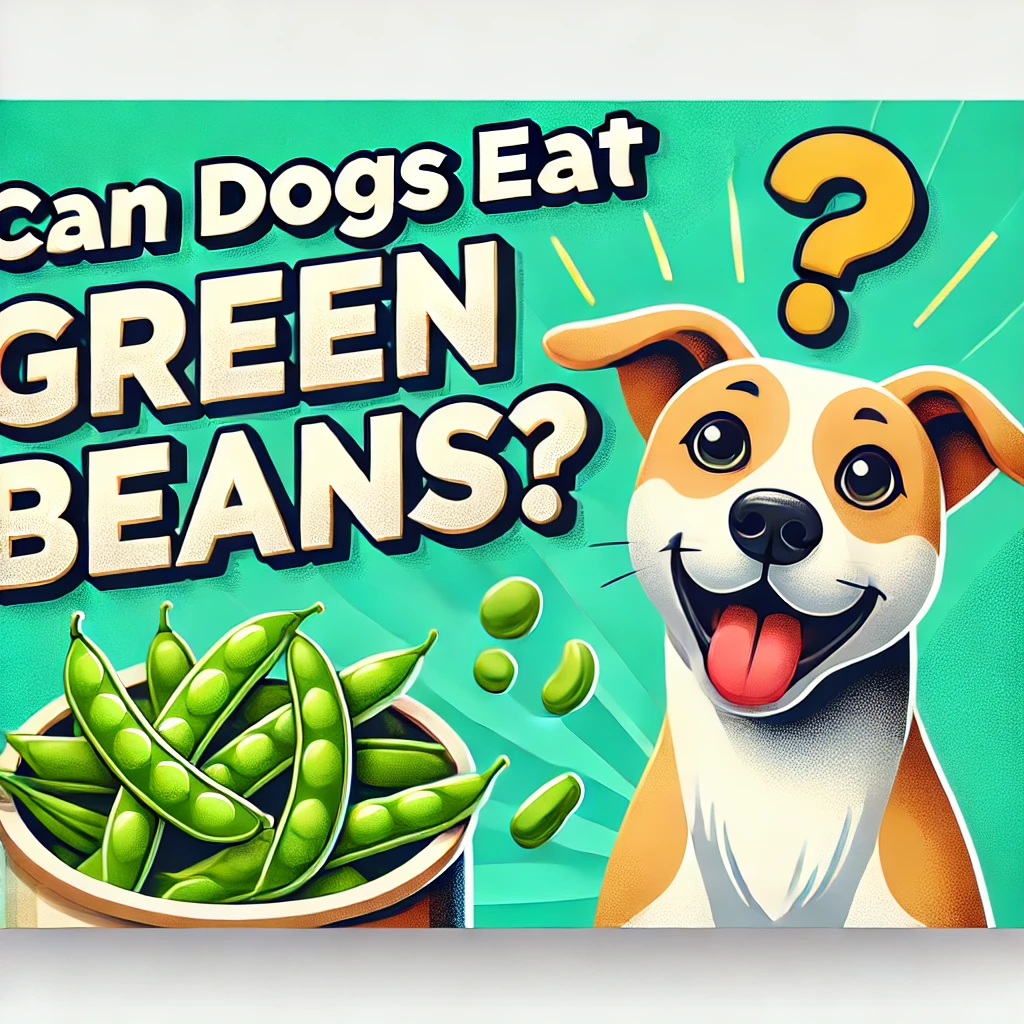
7. Can Dogs Eat Canned Green Beans?
Can Dogs Eat Green Beans? (canned) Canned green beans are generally safe for dogs if they are unsalted or have no added preservatives. However, most canned green beans contain high levels of sodium, which can be harmful to dogs, leading to dehydration or sodium poisoning. If you’re using canned green beans, choose varieties with no added salt, and rinse them thoroughly to remove any excess sodium before feeding them to your dog.
While canned green beans may be convenient, fresh or frozen green beans are preferable because they retain more nutrients and do not contain potentially harmful additives. If canned green beans are the only option, moderation is key, and they should only be used occasionally as a treat.
8. Can Dogs Eat Green Beans? Casserole
Can Dogs Eat Green Beans? Green bean casserole, a popular holiday dish, is not suitable for dogs. Traditional green bean casserole contains ingredients like cream of mushroom soup, onions, garlic, and spices, all of which are unsafe for dogs. Onions and garlic are toxic to dogs and can cause severe health problems, including anemia. Additionally, the cream and fat content in the casserole can upset a dog’s stomach and lead to pancreatitis.
If you want to share green beans with your dog during the holiday season, set aside plain, unseasoned green beans before adding other ingredients to the casserole. This way, your dog can enjoy a safe treat without the risk of ingesting harmful ingredients.
9. Can Dogs Eat Green Beans? (frozen)
Can Dogs Eat Green Beans? (frozen) Yes, frozen green beans can be an excellent treat for dogs. They are low in calories, high in nutrients, and make for a crunchy, refreshing snack. Frozen green beans are particularly useful in hot weather, providing a hydrating and cooling treat that can help regulate body temperature. Additionally, frozen green beans can be a natural way to soothe teething puppies, as the cold temperature helps alleviate gum discomfort.
When choosing frozen green beans, ensure they are plain and unsalted. Frozen green beans retain most of their nutritional content, making them a healthy and convenient option. Avoid feeding them in large quantities, as overconsumption may lead to digestive upset due to the high fiber content.
Can Dogs Eat Green Beans? and how much?
Generally, green beans should make up no more than 10% of your dog’s daily caloric intake. For small dogs, a few pieces will suffice, while larger dogs may enjoy a handful. Green beans can be a low-calorie, fiber-rich treat, but feeding too many can cause digestive upset. Introduce green beans gradually, observing your dog’s tolerance. If you’re considering a larger amount as part of a weight management plan, consult your veterinarian for guidance to ensure your dog’s diet remains balanced and nutritious.
Can Dogs Eat Green Beans? if not then why?
Can Dogs Eat Green Beans? Dogs can eat green beans, but certain preparations may pose risks. Canned green beans often contain added salt, and seasonings like garlic or onions, common in green bean dishes, are toxic to dogs. Feeding green beans in large quantities can lead to digestive upset, including gas and diarrhea due to their high fiber content. Additionally, raw green beans can be hard for some dogs to digest. For safety, serve green beans plain, fresh, or steamed without additives, and consult your vet if you’re unsure about incorporating them into your dog’s diet.
Can Dogs Eat Green Beans? in uK
Can Dogs Eat Green Beans? Yes, dogs in the UK can safely eat green beans as long as they are plain and served in moderation. Green beans are a nutritious, low-calorie treat, suitable for dogs in any location. In the UK, you can find fresh, frozen, or unsalted canned green beans to add variety to your dog’s diet. Make sure they’re free from seasonings or added salt, which can be harmful. As with any food, introduce green beans gradually and consult a vet if you have concerns about feeding them to your dog.
Can Dogs Eat Green Beans? and vegetables.
Dogs can safely eat a variety of vegetables, including carrots, green beans, cucumbers, zucchini, bell peppers, and sweet potatoes (cooked). These veggies are low-calorie and rich in vitamins and fiber, making them excellent snack options. Leafy greens like spinach and kale, when served in moderation, are also beneficial. However, avoid vegetables like onions, garlic, and leeks, as they are toxic to dogs. Always introduce vegetables gradually, serve them plain (without seasoning), and consult your vet if you’re adding a new type of vegetable to your dog’s diet.
Can Dogs Eat Green Beans? are they laxative for dogs?
Green beans have high fiber content, which can have a mild laxative effect on dogs. When fed in moderate amounts, they can promote healthy digestion and regular bowel movements. However, too many green beans may lead to loose stools or diarrhea, particularly if your dog isn’t used to a high-fiber diet. If you notice digestive upset after feeding green beans, reduce the amount and introduce them more gradually. As always, consult your veterinarian if digestive issues persist.
How do I cook green beans for my dog?
Can Dogs Eat Green Beans? Yes, To cook green beans for your dog, simply steam or boil them until they’re soft but not mushy. Avoid adding salt, butter, oils, or seasonings, as these can harm your dog’s digestive system. Cooked green beans are easier to digest than raw ones, especially for dogs with sensitive stomachs. Once cooked, cool them down and cut them into small, bite-sized pieces to prevent choking. Plain, cooked green beans can be mixed with your dog’s regular food or served as a treat.
Are any beans toxic to dogs?
Can Dogs Eat Green Beans? Yes, some beans are unsafe for dogs. Broad beans (fava beans) and raw kidney beans contain toxins that can cause vomiting and diarrhea. Raw beans like soybeans and certain legumes also contain anti-nutrients, which can harm dogs if not cooked properly. While most cooked beans like black beans, kidney beans, and green beans are safe in moderation, avoid seasoned or canned beans with added salt. Always check with your vet before introducing new types of beans to your dog’s diet.
When should you not eat green beans?
Avoid eating green beans if they are slimy, moldy, or have a sour odor, as these are signs of spoilage. Old or improperly stored green beans can harbor harmful bacteria, which can cause foodborne illnesses. Additionally, green beans with visible signs of decay, such as browning, shriveling, or black spots, should be discarded. If green beans have been stored for an extended period (over a week in the refrigerator) or were improperly stored, it’s best to avoid eating them.
Can you eat raw green beans?
Yes, raw green beans are safe to eat, though some people may find them harder to digest compared to cooked ones. Raw green beans are crunchy and slightly sweet, making them a popular snack in salads and veggie platters. However, cooking green beans helps break down certain anti-nutrients and improves digestibility, particularly for those with sensitive stomachs. Eating raw green beans in moderation is generally safe, but steaming or boiling can enhance their nutritional availability.
Can dogs eat mango?
Yes, dogs can eat mango in moderation. Mango is a nutritious fruit that provides vitamins A, C, and E, and fiber. When feeding mango to your dog, remove the skin and pit, as these can be choking hazards and contain cyanide traces, which are toxic. Cut the mango into small, manageable pieces for easy chewing and digestion. While mango can be a refreshing treat, its high sugar content means it should be an occasional snack to avoid weight gain or digestive issues.
Can dogs have garlic?
No, dogs should not eat garlic. Garlic is toxic to dogs and can cause serious health issues, including damage to red blood cells, leading to anemia. Even small amounts of garlic can be harmful, with symptoms including vomiting, weakness, and lethargy. Garlic toxicity can accumulate over time, so it’s essential to avoid it entirely in your dog’s diet. If you suspect your dog has ingested garlic, contact your veterinarian immediately for advice and possible treatment.
What veggies can dogs not eat?
Dogs should avoid onions, garlic, leeks, and chives, as these are toxic and can cause gastrointestinal upset and red blood cell damage. Mushrooms (unless store-bought varieties are carefully identified) and rhubarb should also be avoided due to potential toxicity. Avocado skin and pit contain persin, which can be harmful to dogs. Always research or consult your vet before introducing new vegetables to your dog’s diet, as some may be unsafe or cause allergic reactions.
What is the healthiest diet for dogs?
The healthiest diet for dogs is a balanced diet that includes high-quality protein, healthy fats, and essential vitamins and minerals. Commercial dog food brands formulated to meet AAFCO (Association of American Feed Control Officials) standards typically provide balanced nutrition. Some owners choose to feed fresh or homemade diets, but it’s crucial to consult a veterinarian or pet nutritionist to ensure balanced meals. Adding whole foods like vegetables, lean meats, and certain fruits can complement a balanced diet, supporting your dog’s overall health and wellness.


